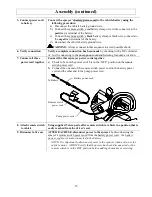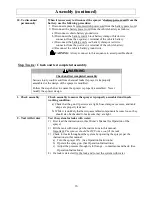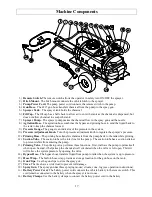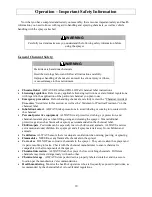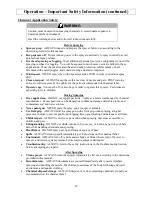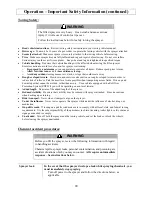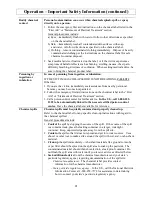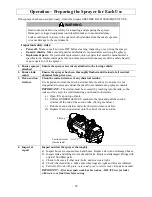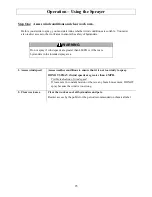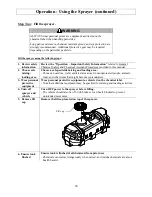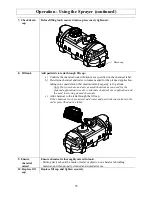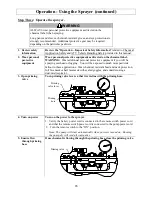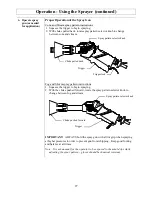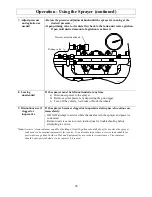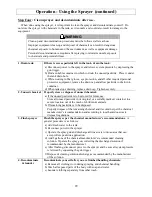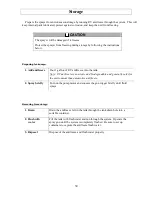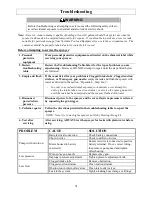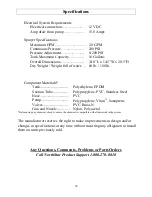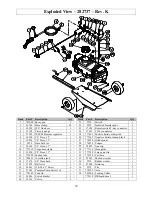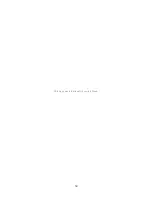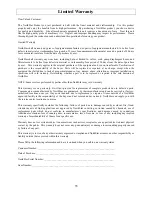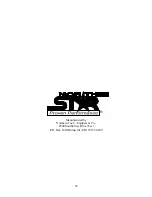
Operation - Using the Sprayer (continued)
29
Step Four: Clean sprayer and decontaminate after use.
When done using the sprayer, it is important to clean the sprayer and decontaminate yourself. Do
not store the sprayer with chemicals in the tank, as it is unsafe and could also result in damage to the
equipment.
WARNING
Clean-up and decontamination procedures must be followed after each use.
Improper equipment clean-up and disposal of chemicals can result in dangerous
chemical exposure to humans and the environment, as well as equipment damage.
Personal decontamination is required after spraying to minimize unsafe exposure
to chemicals and potential illness.
1. Drain tank
If there is excess pesticide left in the tank, drain the tank:
a) Disconnect power to the sprayer and relieve system pressure by depressing the
gun trigger.
b) Find a suitable container in which to drain the unused pesticide. Place it under
the tank drain hole.
c) While wearing rubber gloves, eye protection, and all other required personal
protective equipment, remove the drain cap and allow pesticide to drain into
container.
d) When tank stops draining, replace drain cap. Tighten securely.
2. Unused chemical Properly store or dispose of unused chemical:
a) If the unused pesticide is to be stored for future use:
Store all unused pesticide in its original, or a suitably marked, container in a
secure location out of the reach of children & animals.
b) If remaining pesticide is to be disposed:
Properly dispose of the remaining chemical and its container per the chemical
manufacturer’s recommendation and according to local hazardous waste
disposal regulations.
3. Flush sprayer
Flush the sprayer per the chemical manufacturer’s recommendations.
A
general procedure is as follows:
a) Add fresh water to the tank.
b) Reconnect power to the sprayer.
c) Operate the spray gun and discharge all rinse water onto an area that can
accept dilute pesticide application.
d) Add 5 gallons of the chemical manufacturer’s recommended cleaning
solution. Operate the spray gun, collecting the discharged solution if
recommended by the manufacturer.
e) After flushing, disconnect power to the sprayer and be sure all system pressure
is relieved by squeezing the gun trigger.
f) Dispose of cleaning solution discharge as recommended by the manufacturer
of the solution.
4. Decontaminate
& launder
Decontaminate yourself after you are finished handling chemicals:
a) Remove all clothing worn during spraying and chemical handling.
b) Wash all exposed parts of the body with soap and water.
c) Launder clothing separately from other wash.

